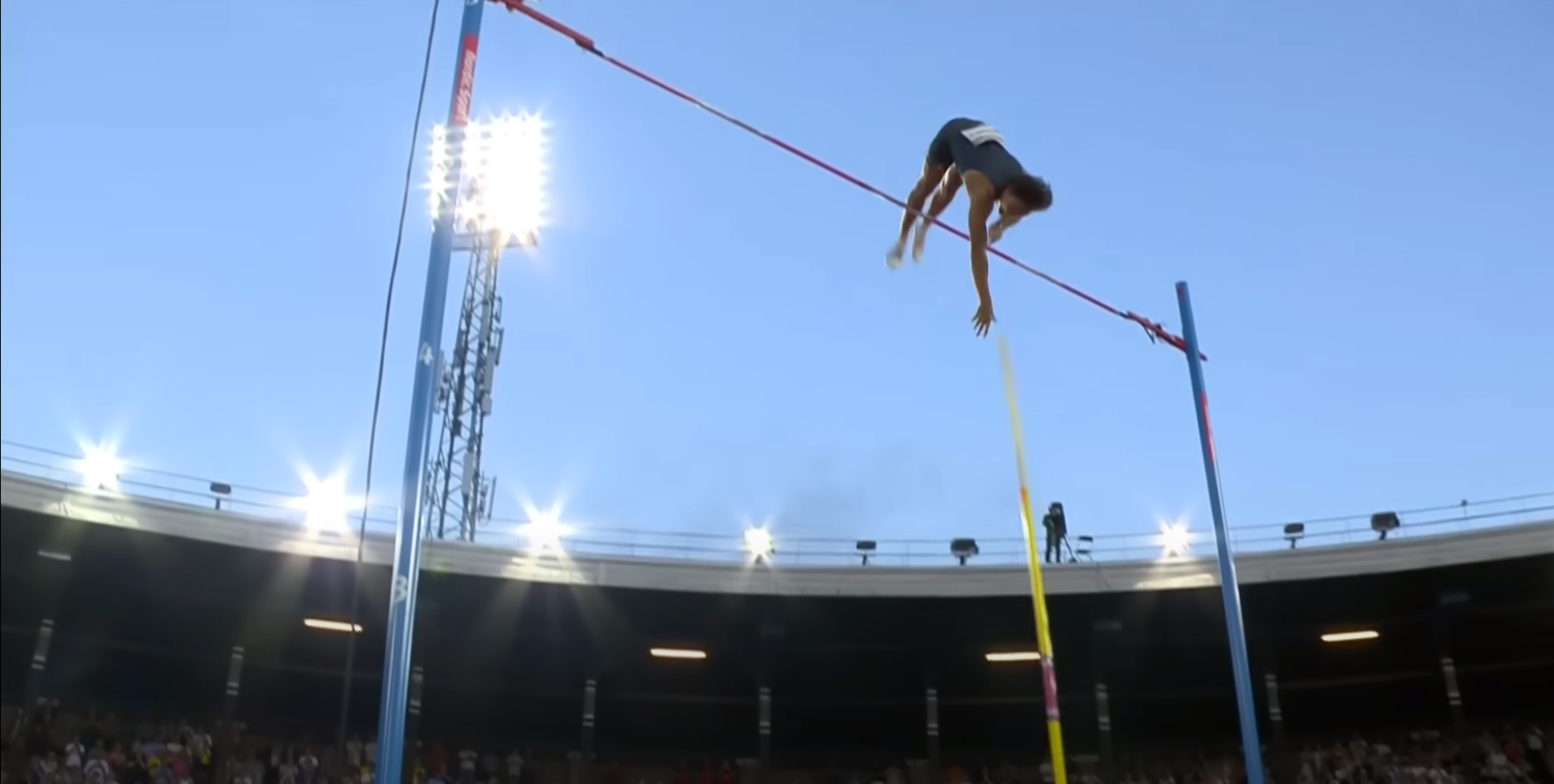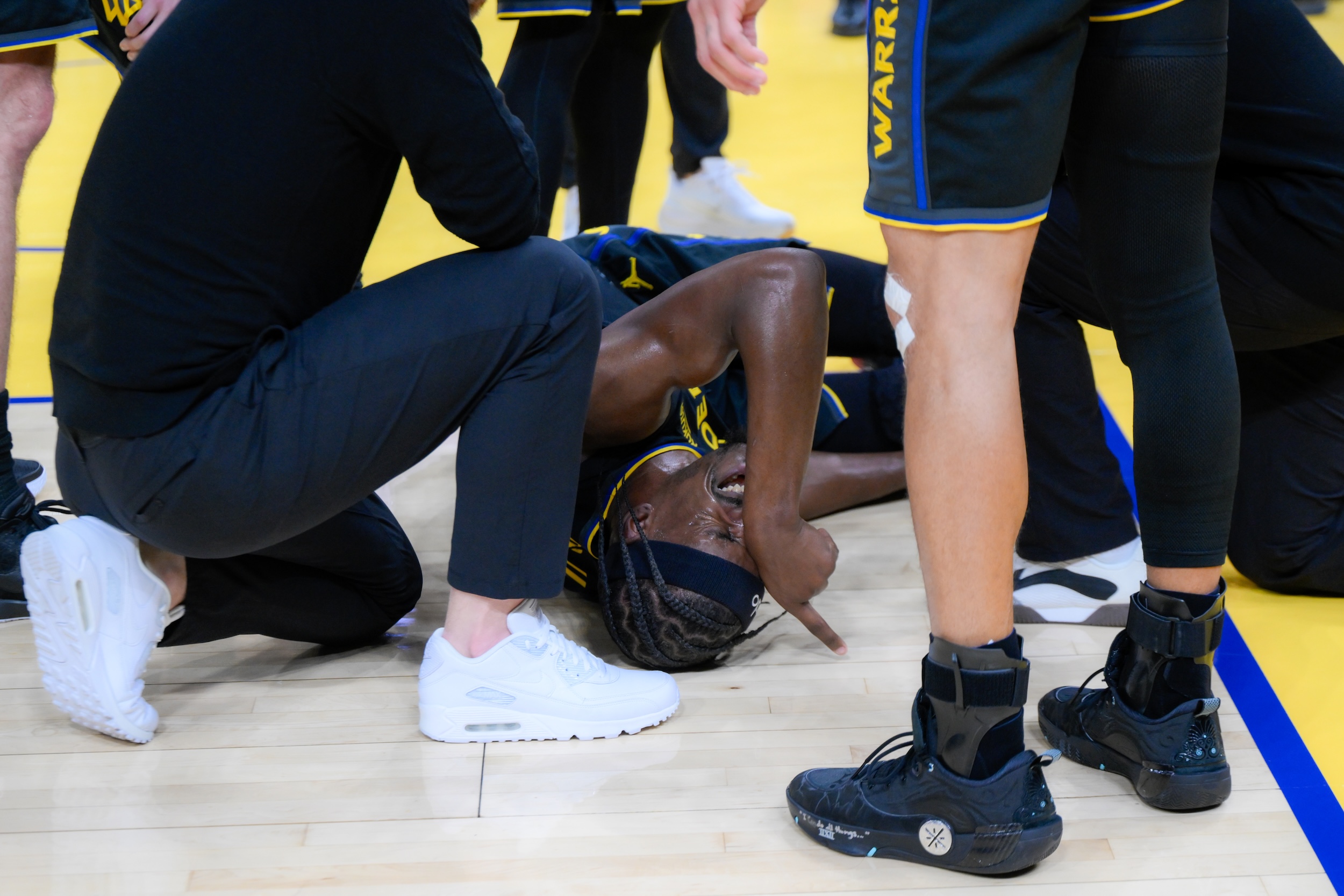It is not the most telling testament to how preposterous and brilliant he is at his chosen sport, but it is a fact that the Mondo Duplantis pole vault that went viral over the long weekend was not the most recent instance of him breaking a world record in astonishing fashion. It was, in what is maybe a more telling testament, not even the first time that this particular slow-motion video of the Swedish-Cajun athlete breaking a world record had blown minds online on a massive scale, although the shifting standards of virality make it tough to compare this most recent instance with the initial one. For instance, Duplantis's own TikTok post commemorating the indoor world record he set back in March has been viewed nearly twice as many times as the 2017 Facebook post that is currently at 2.4 million views. They're both pretty good videos, but I'm not sure that's really got anything to do with anything.
That a slow-motion video of a 2017 pole-vault would blow up on Twitter during a holiday weekend in 2022 is strange, but also just what happens on social media. It is the nature of Twitter that, sometimes, a watermarked stock image of a park bench with text reading "sitting on one of these just hits different" will blast around the world to wild if mostly inexplicable acclaim. This is, in fact, a fairly frequent thing. The rushing current of random flotsam and variously toxic junk flows constantly; it is anyone's guess which bit will snag on the wheel of a submerged shopping cart and receive its moment in the sun.
In some ways, a business writer posting the video of a five-year-old pole-vaulting record is similar to the Benches Hit Different species of viral post. In another sense, though, it is the purest justice. Never mind that it is old, or that Duplantis has set many records since; the video is so implausible and so good that this response is natural. Every social media platform would be improved immeasurably if it were suddenly one-third pole-vaulting videos. As it exists, this is absolutely a space of honking unreason and ultra-cynical thirstiness in which things just happen and keep happening without any real evidence of a human fingerprint on any of it, but also the appeal of this particular bit of viral flotsam is easy enough to get:
Slow motion of 17-year-old Mondo Duplantis' record-breaking jump...
— Tansu YEĞEN (@TansuYegen) July 1, 2022
pic.twitter.com/n0sNwDtouB
So easy, in fact, that I will not bother to spell it out here, although I will suggest that some special attention be paid to 1) where Duplantis's body is when he releases the pole, and also 2) where his hips are when he sails over the bar. But there is no wrong way to watch this, and the engagement numbers that bear that out seem, just this once, absolutely justified.
It might be helpful to situate the recurrence of this particular Duplantis jump within the broader continuum of Viral Mondo Duplantis Shit. That twice-viral slow-mo vault, which was another instance of Duplantis smashing a record for his age group, came at the New York Armory back in 2017, when Duplantis was still in high school. He had already had his first big online moment a year earlier, thanks to an Instagram video of the 16-year-old Duplantis pole-vaulting off of a hoverboard in the backyard training set-up that his parents—former elite U.S. pole-vaulter Greg Duplantis and Helena Hedlund, a Swedish-born heptathlete who met Duplantis at LSU while she was on the volleyball team—had constructed at their Lafayette, La. home. By the end of 2017, Duplantis had been called the Pele of pole-vaulting in the Orange County Register and the Tiger Woods of pole-vaulting in the New York Times.
This continuum excludes track-and-field-specific instances of micro-virality like the 2017 video in which Duplantis cleared an 18-foot, 0.5-inch pole vault 10 times in 11 tries; he managed all that in 28 minutes. The video was a response to a "pole vault challenge" video posted by Sam Kendricks, who cleared that distance five times in 30 minutes in a video posted years earlier; at the time of Duplantis' response, Kendricks had won Olympic bronze and Duplantis was a junior in high school. It is a hallmark of stories about Duplantis, even to this day, to mention that pole-vaulters generally do not peak until they are in their mid-twenties. As I have just mentioned it myself, I can see its utility in establishing him as the freakish prodigy that he is.
Duplantis, who went pro after one year at LSU and won Olympic Gold in Tokyo, is still just 22. He set his most recent world record last Saturday, at a meet in Stockholm.
In Europe, where track and field is a big spectator draw, Duplantis enjoys a more readily comprehensible sort of fame. He does what he does at public events, and the public shows up to cheer. The pole-vault is reliably as close as sports get to the visual representation of the outer boundaries of human possibility—not to belabor the point, but the Duplantis run above begins with him moving horizontally on a track with a long pole in his hands, ends with him flat on his back and ecstatic on a mat, and, with the addition of zero additional external variables beyond the planting of that fiberglass pole, is mostly a brief but endless moment in which his airborne body is around twenty vertical feet off the ground.
Pole-vaulting is just like that, but also it is a sport in which fame, at least in the United States, plays out through these little eruptions of viral miraculousness when and if it plays out at all. Duplantis is understood by his peers, all of whom can also basically make themselves fly, as a virtuoso among virtuosos. "He can do my technique if I asked him," Kendricks told Olympics.com. "He can do Renaud's [Lavillenie, who won 2012 Olympic Gold and silver in 2016] technique. He can do it all." In that 2017 Times story, Kendricks says that Duplantis even knows more about the sport's history than anyone. More impressive than that is that Duplantis has continually delivered on that ability. "There are any number of reasons high school stardom may not translate into Olympic prominence—injury, burnout, expanding interests, bad luck," Jere Longman wrote in the Times back in 2017. None of those have derailed Duplantis, who has just kept on becoming the best in the world at this exceedingly difficult thing. And yet I realized, in pulling this together, that the actual reason Mondo Duplantis's (fucking incredible) name was familiar to me at all was because the Mets had drafted his brother Antoine out of LSU a few years ago.
Antoine is out of the organization already, and is currently playing on an Indie League baseball team with a bunch of guys whose names are much more familiar to me than Mondo Duplantis's. "Not quite as recognizable as Jair Jurrjens" is a strange sort of fame for a living athletic demigod to have, but also there's more than one way to do this. Duplantis will set more records and win some as-yet unknown number of Olympic medals and make a living and a life in doing so, and also periodically some algorithmic fluke or stroke of viral whimsy will send the rest of the world some signal of the impossible things that he can do. Damn, we might say when it happens again, where did this dude come from?






